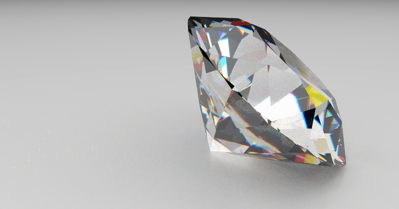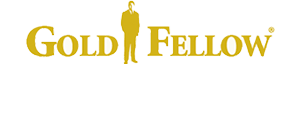
Diamonds are valuable items sought after by many for their scarcity and beauty. However, if you currently own diamonds you no longer have use for, you may be wondering how to sell your diamonds in the safest and most lucrative way. At GoldFellow, we have over 35 years of experience buying gold, gems, and fine metals and are well aware of scams and shady dealers to avoid - those whose only focus is to purchase diamonds from you at the lowest possible price.
Get a Proper, Professional Valuation for Your Diamonds
The first step in selling any possession of yours is to find the current market value. Many think this is as simple as walking to your nearest pawnshop and asking how much they’d purchase your diamonds for. While pawnshops can be of great service when offloading hard-to-sell old trinkets, professionals should evaluate any item of real value to ensure you are getting a fair price. Pawnshops make their money buying items at below market price. At GoldFellow, we recommend getting your diamonds appraised by professional jewelers.
How Are Diamonds Valued?
Most diamonds are rated and subsequently priced by four factors. These factors are quality of cut, carat weight, clarity, and color.
How Are Diamond Cuts Rated?
Diamond cuts are the factor that will most affect the price of your diamond. Professionals examine the edges, angles, symmetry, and polish of the diamond to determine its value. The Gemologists Institute of America (GIA) grade cuts on four levels: poor, good, very good, and excellent.
How Are Diamond Carat Weights Rated?
Diamond carat weights are rated mathematically, with professionals utilizing a combination of the diamond’s diameter, depth, and weight. Heavier weight, however, does not always mean higher value, as there could be bad cutting or discolored stones.
How Is Diamond Clarity Rated?
Diamond clarity is judged by two factors: inclusions and blemishes - and the lower the clarity, the lower the value of the diamond. Inclusions are any flaws on the inside of the diamond that are a result of mistakes during the cutting process. Blemishes are similar defects that appear on the surface of the stone.
How Are Diamond Colors Rated?
Diamonds can vary significantly in color, affecting the desirability and price of the gem. Diamonds are examined under lighting and compared to other benchmark stones, and placed in one of four categories:
D-F Rated Diamonds: The highest color quality, these diamonds are categorized as colorless.
G-J Rated Diamonds: Second comes diamonds that are very close to being completely colorless but have hints of yellowing.
K Rated Diamonds: These diamonds have some color when examined under lighting; however, they are mostly clear to the naked eye.
L-Z Rated Diamonds: These stones have a color visible to the naked eye and are not transparent.
Take Your Diamond to a Professional
As you can see above, there are various factors that determine a diamond’s value, many of which require specialized equipment. This is why we stress the importance of taking your diamonds to a professional. At GoldFellow, we have experienced diamond dealers and offer free, insured mail-in services for gold, gems, and fine metals. We film our grading to ensure you can watch the entire process. If you are not satisfied with our pricing, we return the items at our own expense. We are also available for in-person valuations at our office in Weston, Florida. Contact us today to get fast, reliable money for your diamonds and jewelry.
Related Readings:
Measuring Silver’s Value: How is it Calculated?
Answering the Most Common Questions About Natural Colored Diamonds





